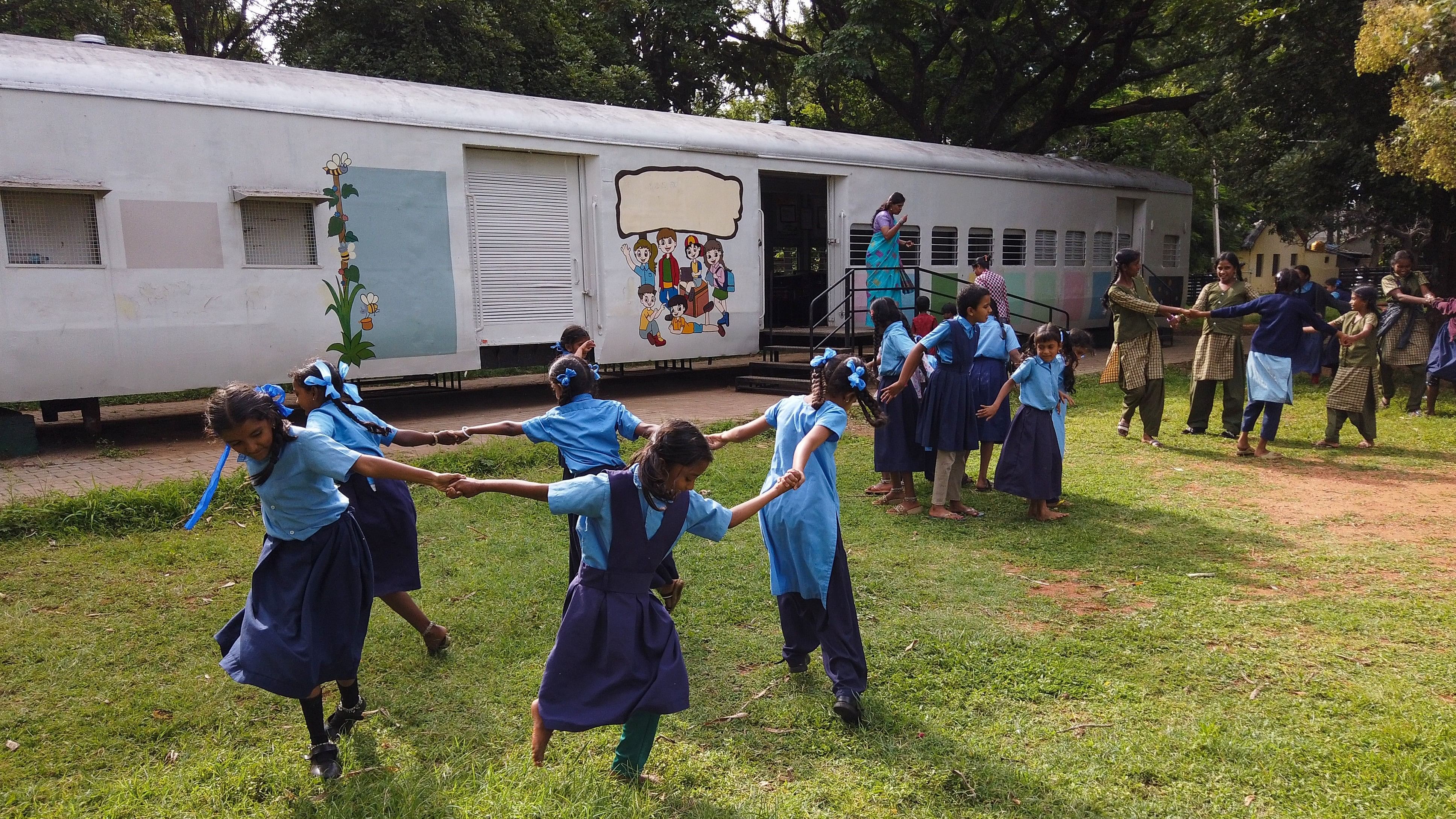
A unique sight greets the eyes of passersby along Mananthavadi road in Mysuru city. Amidst the urban landscape stands a school unlike any other.
The Sarkari Hiriya Prathamika Shale (Government Higher Primary School) in this area is not housed in the traditional brick-and-mortar structure, but functions within the confines of railway coaches. The coaches are painted with vibrant hues and the windows are adorned with curtains.
The school and its unique location are testaments to innovation born out of necessity. About five to six years ago, the school occupied a dilapidated old heritage building. The passage of time took its toll, and eventually, the building collapsed. As a result, the school found itself teetering on the brink of closure. For the students, teachers, and parents, this was a harrowing time.
Since the land that the heritage building stood on belonged to the Indian Railways, there began a tug of war between the state government and the railways for the land. The Indian Railways was reluctant to build a state-run school on their property, and thus, the future of the institution hung anxiously in the balance.
Just when all hope was lost, the railways conceded, recognising the importance of education, and extending a helping hand during the pandemic. Officials pitched the idea of using train coaches. These coaches could be modified into classrooms, ensuring that children’s education continued uninterrupted.
Geetha T M, a senior teacher, reflects on her decade-long journey at the school. “I have seen its transformation,” she recalls. She credits the Indian Railways’ chief workshop manager, Srinivas, for the innovative restoration of train coaches into classrooms. The coaches now house desks, benches and chalkboards.
“It is exciting to study in these train classrooms,” says Ajay, a Class six student at the school.
Academic prowess
The school offers education from Classes one to seven in Kannada medium. Inside the humble classrooms, teachers try to impart lessons that are not limited to the contents of textbooks.
With a modest student strength of 61 children — 25 boys and 36 girls— the school has embraced a variety of sports including cricket, kabaddi, badminton, hopscotch, kho kho and carrom, despite space constraints.
For instance, Ajay’s interests span from carrom board to cricket and kabaddi — all supported by the school, reflecting its commitment to nurturing both academic and extracurricular passions.
Aliya Kousar, a Class seven student, shares her newfound appreciation after switching from a prestigious convent school. “The teaching here is better,” she notes.
Since the school is primarily attended by children from marginalised socio-economic backgrounds, it runs bridge programmes for those who had dropped out of school.
The headmistress, Kalpana, mentions the introduction of special classes and a bridge course named ‘Dinagalu Aivatthu — Kalika Sampatthu’ (gain a wealth of knowledge in 50 days), tailored for students who need academic support and those who have dropped out of school and are seeking to rejoin. The initiative is the brainchild of C N Raju, the block education officer of Mysuru South.
Kalpana shows pride in the school’s achievements. “We provide a top-notch education,” she says. Though the land upon which this innovative school stands still belongs to the Indian Railways, it serves as a reminder of what collaboration can achieve. In a world often divided by boundaries, this school stands as a symbol of unity.